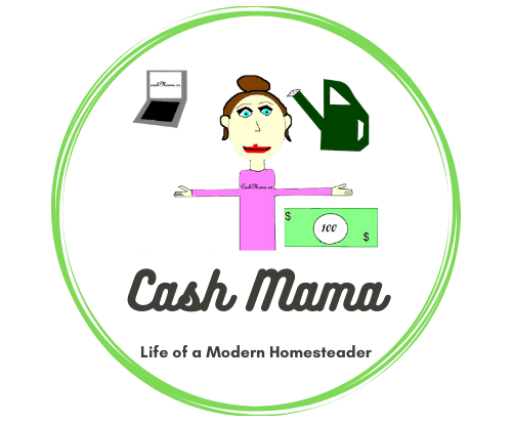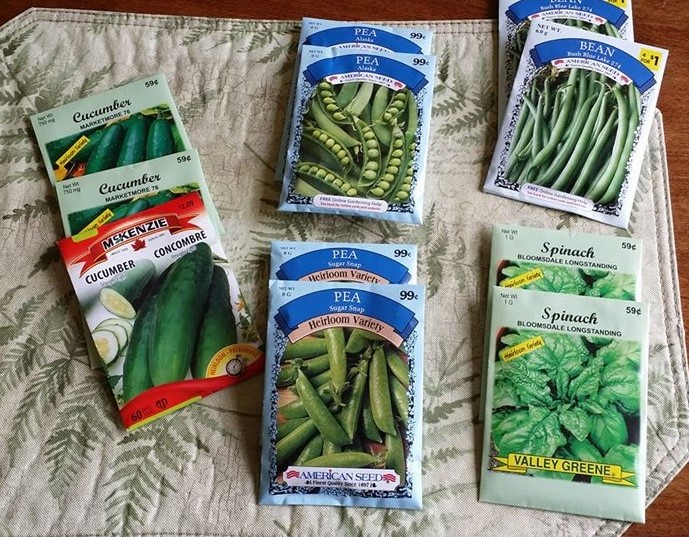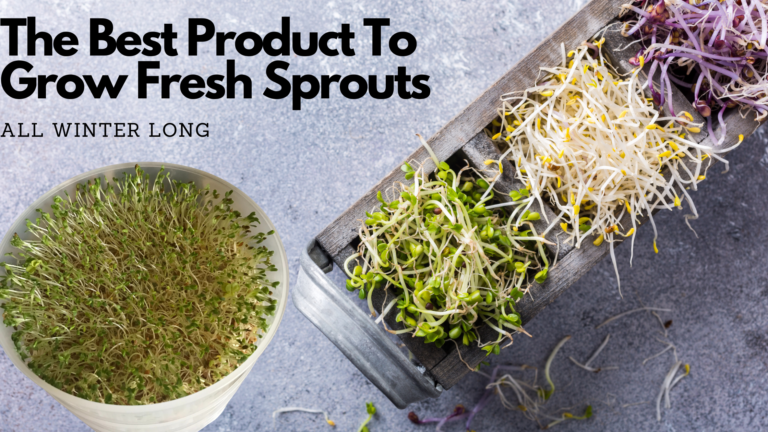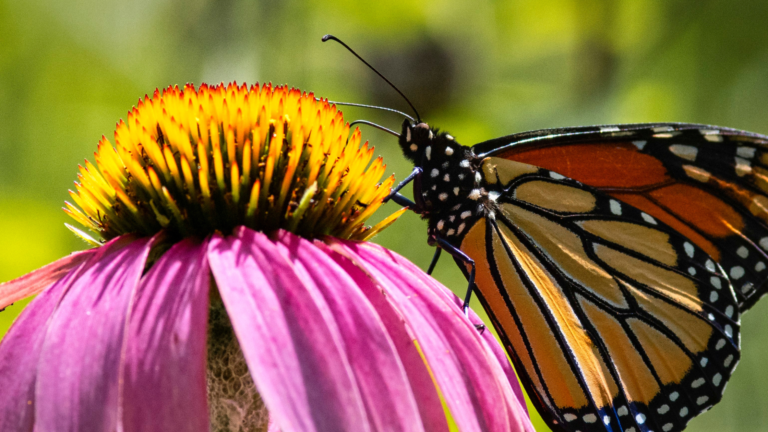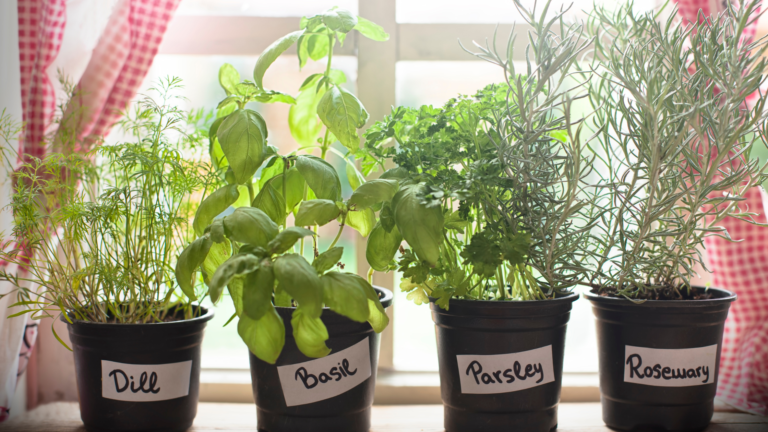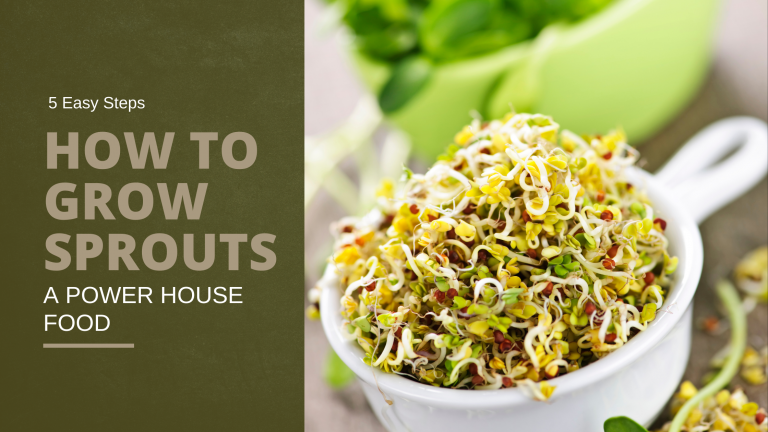What To Grow, What To Grow? – How To Plan Your Garden
Sharing is caring!
 month of May this week?
month of May this week?
We get to actually consider the possibility of going outside without mittens! Breaking news! I washed and packed away my kid’s snowsuit, winter hats, and mittens! So, we are NOT allowed to have any more snow, Mother Nature!
Okay, so, other than the excitement of washing snow pants, I’m pretty excited about how HUGE my tomato plants are getting! Don’t they look awesome!
It’s time to get planning our gardens, as we should be planting in about a month!
Composting
All of the snow has finally melted in our yard, so I was able to get started raking up  some of the many leaves leftover from last fall. We will use some to add to our compost bin that we can finally access again, now that the snow is gone!
some of the many leaves leftover from last fall. We will use some to add to our compost bin that we can finally access again, now that the snow is gone!
I just keep a coffee container under the kitchen sink and add our food scraps, vegetable peels etc. to it. I empty it frequently into the large wooden box that my husband built at the back of the property. We just keep it mixed and turned with our pitchfork.
Leaf Lettuce And Spinach
The first thing that we get in the ground is leaf lettuce and spinach. You can plant it as soon as you can work the soil. It comes up fast and we’ll be eating salad every day starting in July!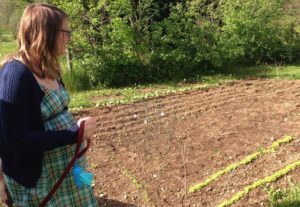
I usually pick every couple of days, clean, cut and spin it in our salad spinner (if you don’t have one, get one!) to get it as dry as possible and store in a container lined with paper towel.
Beans And Peas
We plant our green beans and peas along the back of our garden. We see those come up quickly too!
We drive stakes into the ground and run a hemp twine between them for the bean and pea plants to climb.
Once the beans and peas are mature enough to pick, I make sure that I harvest every day or at least every couple of days. If you keep them harvested regularly, the plants will produce more!
I can pick these as needed and we’ll eat them fresh. I don’t let them sit in the fridge for more than 4 – 5 days before I shell, cut and clean them and throw them into freezer bags to be frozen.
Squash And Cucumbers
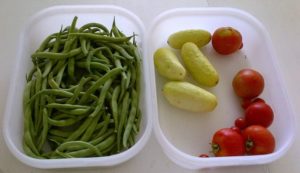 Usually, one side of our garden is taken up with squash and cucumber plants.
Usually, one side of our garden is taken up with squash and cucumber plants.
They vine out, so they need lots of space too. I’ve learned to make sure that the ground surface under the growing squash and cucumbers is as dry as possible. I’ve had squash vine out onto the nearby grass and rot on the vine while laying in the wet grass.
We’ll eat cucumbers fresh and make pickles in the fall with any extra and the squash will be harvested late fall to be cut up, blanched and frozen in freezer bags.
Onions
We have been using onion sets that we purchase at the local farm supply store.
We plant our onion sets in the front of the garden with our leaf lettuce and spinach.
We leave our onions in the ground as long into the fall as possible before harvesting them.
We are still using onions from last fall and should have enough to do us until we harvest this coming fall!
Carrots
We plant carrots close to our peas, tomatoes, and peppers.
Once they are tall enough, I thin them. I start by pulling the ones that are right on top of each other. They should be 1 ½ – 2 in. apart.
Carrots are easy to grow and I’m hoping to grow even more this year!
Once they are big enough, I only pull what I need for cooking on that particular day and leave the rest in the ground until late fall.
Once I pull them all, I clean, peel, cut and blanch them before freezing them in freezer bags.
Tomatoes And Peppers
As I wrote about in my last post, I started tomato and pepper plants inside and plan on planting them in the ground in about a month. The tomato plants will need cages, and we sometimes need to use twine to support them. They need lots of space, so we need to allow for that.
Last year our peppers did great! I believe it was due to our dry summer. It’s my experience that peppers do not like too much water!
I water bath can the tomatoes that we don’t eat fresh. I just flash them into boiling  water and put them into ice water before peeling them. Then I cook them down into a sauce. Last year we canned enough to last us until this year’s harvest.
water and put them into ice water before peeling them. Then I cook them down into a sauce. Last year we canned enough to last us until this year’s harvest.
We use the peppers that we don’t eat fresh to make salsa to be canned. I also added them to some of the tomato sauce.
If we have an abundance of peppers this year, I plan on freezing them on a cookie sheet and then storing them in freezer bags to use in stir fry, recipes etc.
Grow What Works For You
The last two years we have made an attempt to grow corn as well. This year, we decided that we are not going to do that again. Why? Well, it takes up a lot of space and really, for us, was not worth the effort.
I had visions of growing enough corn to have a few feasts of fresh corn (we love it on the BBQ!) and then taking it off the cob to freeze and enjoy throughout the winter.
This is not what happened. We had only a few ears and the raccoons got to those before we did!
We’ve learned to grow what we know we can grow well and to not put more work and resources into growing something than the value of what we actually produce.
We grow what veggies we use, but we also take into account how well we can grow and preserve the vegetables that we choose to plant.
Why not also head to the local farmer’s market and check out what they have, especially at the end of the season? You may find that you can get large quantities of certain veggies at the end of the season that may not be “perfect” at a cheaper price than the cost of the seed and your labor to grow them yourself! Find a way to preserve those veggies through freezing or canning and your set for the winter!
Happy garden planning, folks! Remember, keep it simple!
